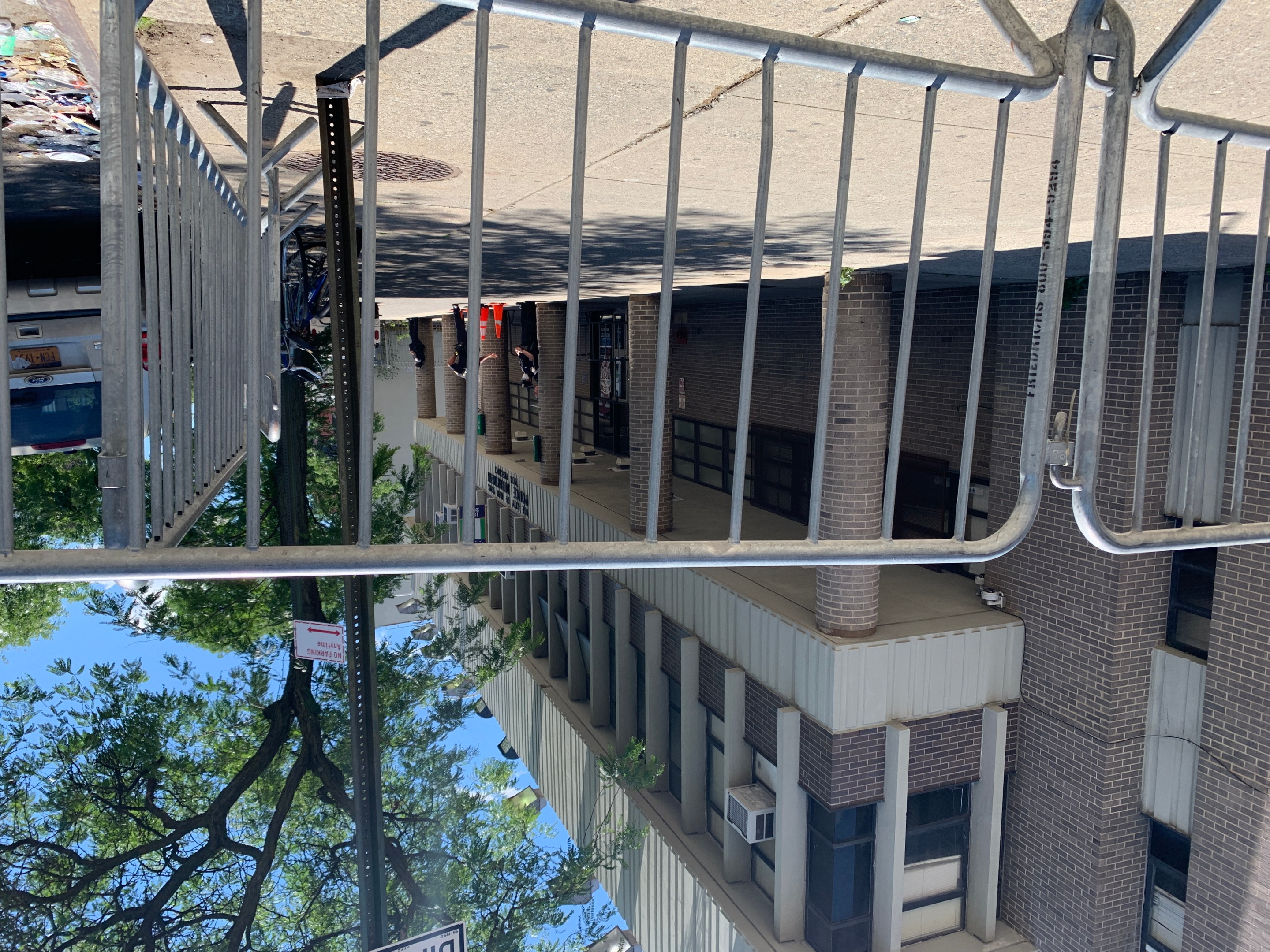It’s true: The NYPD simply stole the streets and sidewalks in front of station houses that it has barricaded during the Black Lives Matter protests — commandeering them without asking the city agency that controls such public space, the Department of Transportation.
DOT Commissioner Polly Trottenberg revealed the unauthorized land grab today during Mayor de Blasio’s daily press briefing, in response to a question from Gothamist reporter Jake Offenhartz.
“NYPD does not come to DOT when they close up streets or sidewalks,” Trottenberg declared when asked if the Mayor’s Office or the DOT had given the NYPD permission to close off the public rights of way.
Neither she nor the mayor had any answer to Offenhartz’s question as to when or even whether they might order the NYPD to reopen the city streets and sidewalks. “I think would be up to the Mayor to direct them otherwise,” she said.
As Streetsblog has reported, in the weeks since the start of the protests, many precincts around the city have used metal barricades and other obstructions in an attempt to create New Yorker-free cordons around their premises. Not only streets, but at least one public park — Carl Shurz Park in Manhattan, near the dock for the NYC Ferry at 90th Street — has seen such police barricades erected. A Streetsblog investigation counted at least 18 precincts around the city with barricaded streets, including at least one, the 50th Precinct in the Bronx, that had been fortified even before the protests in response to the COVID-19 pandemic, its officers said.
The materials used for the barricades have varied: Most precincts employ metal barricades of the kind used for crowd control and to block off parade routes, but vinyl construction barriers and even police SUV cruisers have figured in some set-ups. Whatever the method, the effect is to control the movements of citizens and deny them access not only to public space but also to the station houses that they support with their taxpayer dollars — the antithesis of the mayor's stated goal of fostering "community policing."
At several such fortified locations, police asked residents to show identification in before allowing them to pass through, Gothamist reported. Such fortifications are allowed on an emergency basis for 72 hours, but the precincts must seek authorization for extending them longer than that, some activists have noted. By now, the streets around many precincts have remained barricaded for weeks — despite the fact that the protests have rarely required any police response.
This appears to be illegal.
— placard corruption (@placardabuse) June 12, 2020
Under the City Charter, @NYPDShea only has the authority to suspend traffic rules (in this case obstructing traffic) for up to 48 hours during an emergency.
After that, it requires action by @Pollytrott as @NYC_DOT Commissioner... pic.twitter.com/pMFdiMItC7
Mayor de Blasio — as he has in response to other police depredations, such as beatings of protesters — blamed the exigencies of the protests for the NYPD’s wholesale and prolonged militarization of the public space. Nor did he challenge the NYPD’s apparent contention that its precincts remain in danger of attack by a roused populace. The mayor said:
“Again, we were dealing with a host of profound challenges and obviously distinct threats that were made, violent threats that were made that unfortunately, there was a lot of evidence were very real. So the actions taken in the midst of a crisis situation don't reflect what we would do in everyday reality. [Inaudible] of the matter is anytime that we are convinced there's no longer a problem, of course, we want to remove any such barriers, but whether there is a possibility of violence job one is to protect people’s lives and stop violence.”
Streetsblog asked the NYPD for comment and some indication as to when the precincts might return the right of way to the public. We will update this story if the agency replies.






